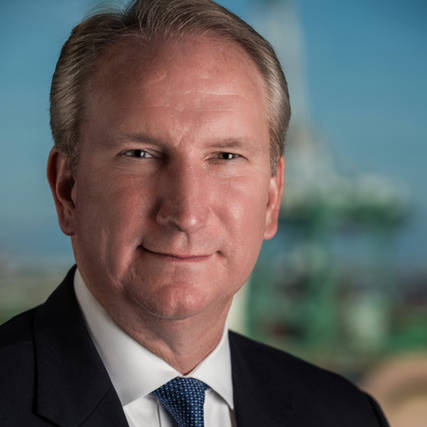Port of Los Angeles Executive Director Gene Seroka argued for a “crucial” West Coast labor contract while describing last week’s longshore shutdown of the Ports of Los Angeles and Long Beach as a “pause.”
At his April 13th media briefing, Seroka said “I'd like to address last week's pause in cargo operations: the Ports of LA and Long Beach little movement of goods on last Thursday's nightside and Friday's dayside shifts.”
That was Thursday.
Then on Friday, Seroka said: “Friday’s first shift also concluded with little work at cargo terminals, and then operations returned to normal on Friday evening. Good Friday typically sees a lower volume of activity during the morning shift, so the impact to operations was relatively minor.”
However, Seroka then went on to say that the ILWU’s action was not insignificant: “This situation captured the nation's attention, and rightly so. It's a reminder that a negotiated labor agreement is crucial in our efforts to regain shipper confidence and bring the cargo back to LA. Although we don't have a seat at the bargaining table, we're closely monitoring the situation on a daily basis … Simply put, there's no bigger priority right now than this contract agreement.”

Volumes Down
Seroka said that in March the Port of Los Angeles processed “just over 623,000 TEUs and while that's still a 35% decline from last March, it's important to remember that last year was our highest volume March on record.”
The decline is part of a pattern: “When we look at the five-year average, our March numbers were down more than 13%. That too, is concerning. On a positive note, March did see a 28% increase in volume over February. The number of canceled sailings declined from 30 in February to 18 in March…”
Seroka noted that imports were also down: “March imports landed at just under 320,000 TEUs roughly 35% less than last year. Exports finished just above 98,000, TEUs a 12% year on year decline, and we handled just under 205,000 empties, nearly a 42% drop versus last March.”
In the first quarter of 2023, Seroka said: “We finished at 1.8 million TEUs. That's a 32% drop from Q1 last year, which again was our best first quarter ever … compared to our average Q1 volume over the past five years, we're down more than 19%. Also, a disappointing trend that needs to be reversed.”
Seroka explained the long-term decline continued for reasons that “have remained constant. First, widespread concern over the ongoing West Coast labor contract negotiations ... Second, in the overall marketplace, high interest rates and the rising cost of living continue to impact discretionary spending.”
Volvo Electric Trucks
Next, Seroka’s introduced Peter Voorhoeve, President of Volvo Trucks North America, who discussed the latest efforts to develop and bring to market heavy-duty zero emission trucks and related infrastructure.
Voorhoeve explained that to become economical for truckers, electric trucks required lower cost batteries, continued incentives and more truck charging: “So first of all, on our OEM side, we need to continue to work on battery technology better performances, especially also lower cost for the batteries. That's one thing, but that’s happening as we speak … what we need to push (is) volume. That is why regulators come into place and Air Quality Districts … but also EPA … now working on incentive programs … to get the cost of battery electric vehicles down….”
Voorhoeve added: “There is still a big difference between diesel and electric then, and that's also very important. We need charging infrastructure. That's one of the things that we need to focus on very, very hard right now, because as of today, a lot of the charging happens at home. We call it home based charging or destination-based charging. What will happen, what will need to happen as well, is that we need to have more and more charging points on the roads, and we need to have an acceleration in permit issuing for companies or organizations … to install charging infrastructure. We have 3,000 utility companies in the U.S. We need some kind of coordination to accelerate the electric charging structure, the whole permit process…”

